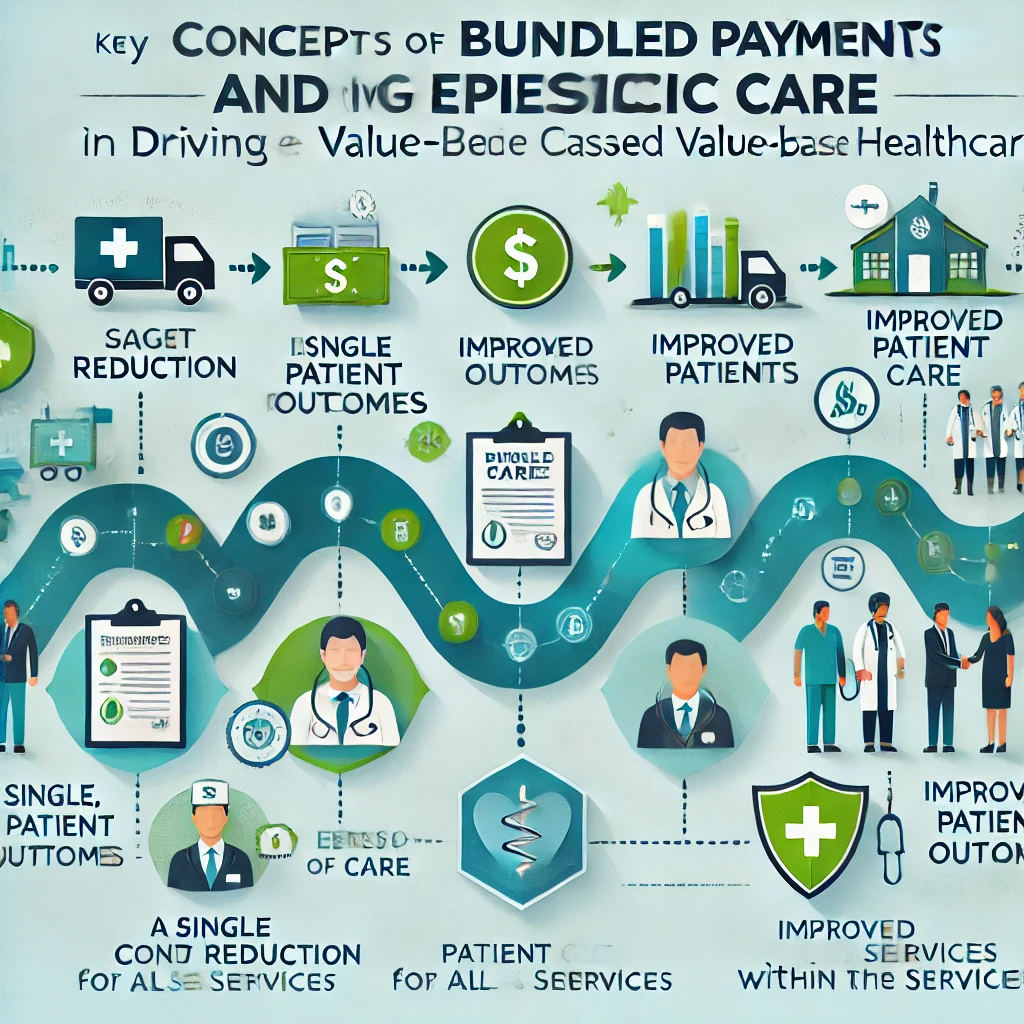The shift from fee-for-service to value-based healthcare is transforming the way care is delivered and reimbursed. At the forefront of this transformation are bundled payments and episodic care models, which are redefining the financial and operational dynamics of the healthcare system. By aligning incentives between providers, payers, and patients, these approaches aim to enhance care quality, improve outcomes, and control costs. This article explores how bundled payments and episodic care are driving value-based healthcare, their benefits and challenges, and their potential impact on the future of healthcare delivery.
Bundled payments, also known as episode-based payments, are a payment model in which providers are reimbursed a single, predetermined amount for all services associated with a specific episode of care. An episode of care typically includes all related treatments and services delivered over a defined period, such as a joint replacement surgery or a 90-day post-operative recovery period. This model stands in contrast to the traditional fee-for-service system, where providers are reimbursed separately for each service, often leading to fragmented and costly care.
Episodic care is closely linked to the bundled payment model. It focuses on managing all aspects of a patient’s care within a specific episode, ensuring seamless coordination among providers and minimizing unnecessary interventions. This integrated approach encourages collaboration and accountability, as providers work together to meet quality benchmarks and deliver cost-effective care.
The rising costs of healthcare and the need for better outcomes have fueled interest in bundled payments and episodic care. Traditional fee-for-service models incentivize volume over value, often resulting in duplicated services, uncoordinated care, and escalating costs. In contrast, bundled payments align financial incentives with clinical outcomes, encouraging providers to prioritize efficiency and quality. By consolidating payments into a single bundle, this model discourages overutilization of services and rewards providers who deliver high-quality care at lower costs. Additionally, patients benefit from more coordinated care pathways, reducing the likelihood of complications and hospital readmissions.
Bundled payments require close collaboration among providers, including surgeons, primary care physicians, specialists, and post-acute care providers. This fosters better communication and coordination, ensuring that patients receive seamless care throughout their treatment journey. For example, a patient undergoing knee replacement surgery can benefit from a well-coordinated care plan that includes pre-surgical preparation, the surgical procedure itself, and post-operative rehabilitation. By focusing on the entire episode of care, providers are incentivized to implement evidence-based practices and minimize variations in treatment. This leads to better patient outcomes, such as faster recovery times, fewer complications, and improved overall satisfaction. Providers are also encouraged to address social determinants of health, such as transportation and home care needs, to support successful recoveries.

Bundled payments have been shown to reduce healthcare costs by eliminating redundant services, avoiding preventable complications, and optimizing resource utilization. Providers who can deliver care efficiently without compromising quality are rewarded with financial savings, which can be reinvested in patient care or organizational improvements. The bundled payment model ties reimbursement to predefined quality metrics, such as readmission rates, infection rates, and patient satisfaction scores. This accountability ensures that providers are focused on delivering high-quality care and achieving positive outcomes, rather than simply maximizing service volume.
Bundled payments and episodic care shift the focus from individual services to the overall patient experience. This holistic approach addresses patients’ physical, emotional, and social needs, promoting a more patient-centered healthcare system. Patients are also more likely to understand their care plans and feel empowered to actively participate in their treatment.
Effective bundled payment models require access to comprehensive patient data across multiple providers and settings. However, data silos and a lack of interoperability between electronic health record (EHR) systems can hinder seamless data sharing and care coordination. Addressing these technical barriers is essential to realizing the full potential of bundled payments. Bundled payments shift financial risk to providers, who must manage costs while meeting quality benchmarks. This can be particularly challenging for smaller practices or those with limited resources to invest in care coordination and infrastructure. Providers may also face financial penalties if they exceed the predetermined payment amount for an episode of care.
Not all episodes of care are straightforward. Patients with complex medical conditions or multiple comorbidities may require additional resources, making it difficult to predict costs and outcomes accurately. Developing risk adjustment mechanisms to account for such variations is critical for ensuring fairness and sustainability. The transition from fee-for-service to bundled payments requires a cultural shift among providers, payers, and patients. Resistance to change, coupled with a lack of familiarity with value-based care models, can impede adoption. Education and training are necessary to help stakeholders embrace the new approach.
Several healthcare organizations have demonstrated the potential of bundled payments and episodic care to drive value-based healthcare. Medicare’s Bundled Payments for Care Improvement (BPCI) Initiative has shown promising results in reducing costs and improving outcomes for conditions such as joint replacements, cardiac care, and sepsis management. Participating providers have reported significant savings and better patient experiences. Geisinger’s ProvenCare® program, a bundled payment model for elective surgeries, has achieved remarkable success in improving outcomes and reducing readmissions. By standardizing care pathways and focusing on quality metrics, Geisinger has set a benchmark for episodic care excellence. Many private payers are collaborating with providers to implement bundled payment models for procedures such as hip replacements and maternity care. These partnerships emphasize shared accountability and incentivize innovative care delivery methods.
As healthcare continues to evolve, bundled payments and episodic care models are poised to play a central role in driving value-based care. Advances in technology, such as artificial intelligence (AI) and predictive analytics, will enable more accurate cost predictions and risk assessments, enhancing the effectiveness of these models. Additionally, greater emphasis on patient engagement and shared decision-making will further strengthen the patient-provider relationship. Policymakers and payers are likely to expand bundled payment initiatives to encompass a broader range of conditions and care settings. This expansion will require ongoing evaluation and refinement to address challenges and ensure equitable access to high-quality care. Furthermore, the integration of social determinants of health into bundled payment models will be critical for addressing disparities and promoting health equity.
